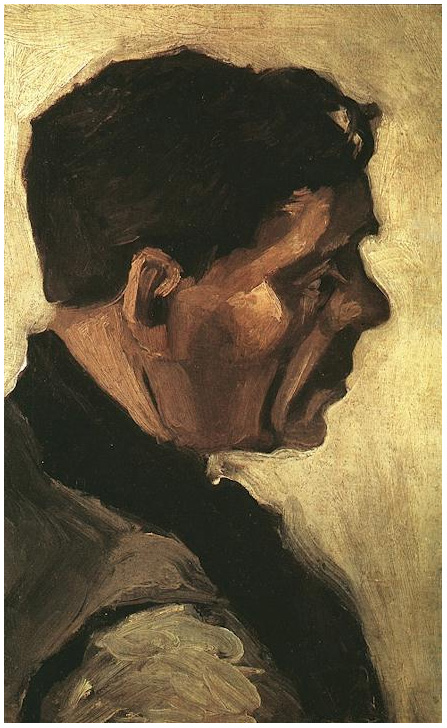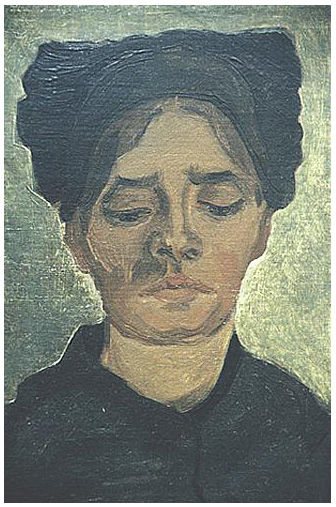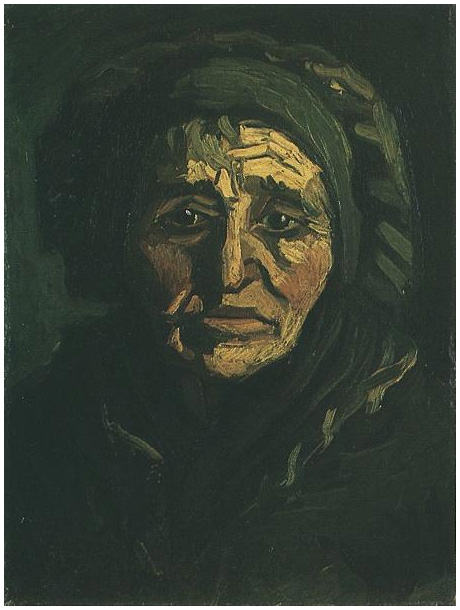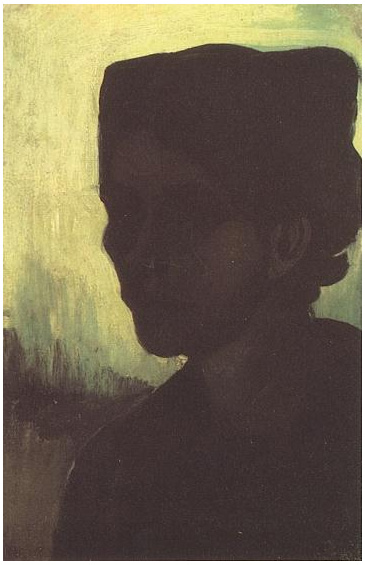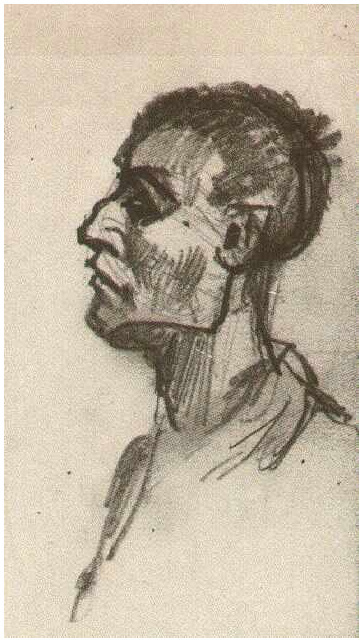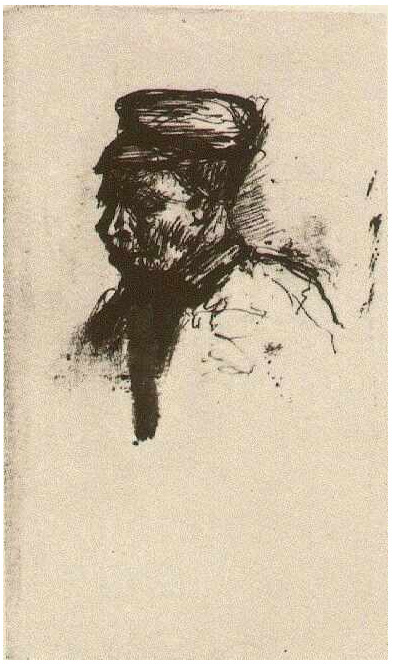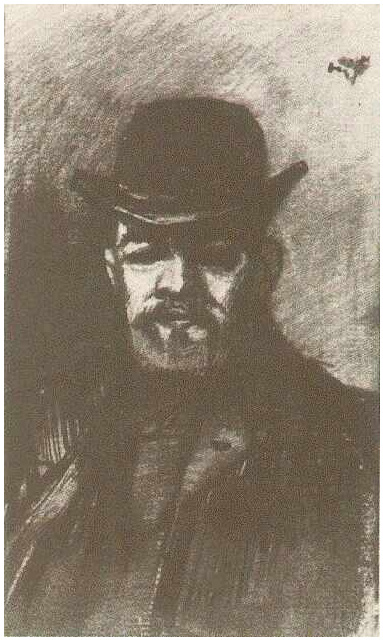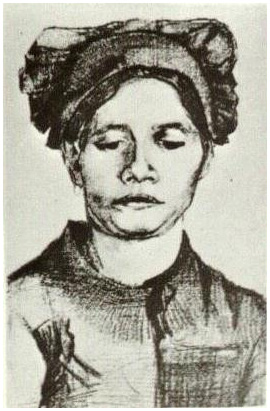From 1881 to November of 1885 Van Gogh lived in the Netherlands. It was during this time that he had a humanitarian outlook on life and spent a good deal of his time painting peasants and workers. He had an attachment and sympathy for the working class and found the subjects noble, simple and honest. At this point of his artistic journey Van Gogh’s color palette consisted mostly of somber earthy tones, many of which were mixed with black.
In February of 1885 we see that Van Gogh was studying form and figure by repeatedly painting and drawing the heads of peasants and workers. In a letter to his brother Theo, in February of 1885 Van Gogh said,
“I am very busy painting those heads. I paint in the daytime and draw in the evening. In this way I have already painted at least some thirty and drawn as many.
With the result that I see a chance of doing it even better before long, I hope.”
He continues,
“But this is a question of colour, and what matters more to me at the point I’m at now is the question of form. I think the best way to express form is with an almost monochrome colouring, the tones of which differ principally in intensity and in value….
I certainly see all this too – I think it just as superb as anybody else, but I am even more interested in the proportion of a figure, the division of the oval of the head, and I cannot master the rest before I have a better grip on the figure.”
By the time he was done studying the head, he had executed nearly 50 different works of heads, a series which he referred to as “Heads of the People”.
Letter Source:
http://www.webexhibits.org/vangogh/letter/15/394.htm
|
|
|

